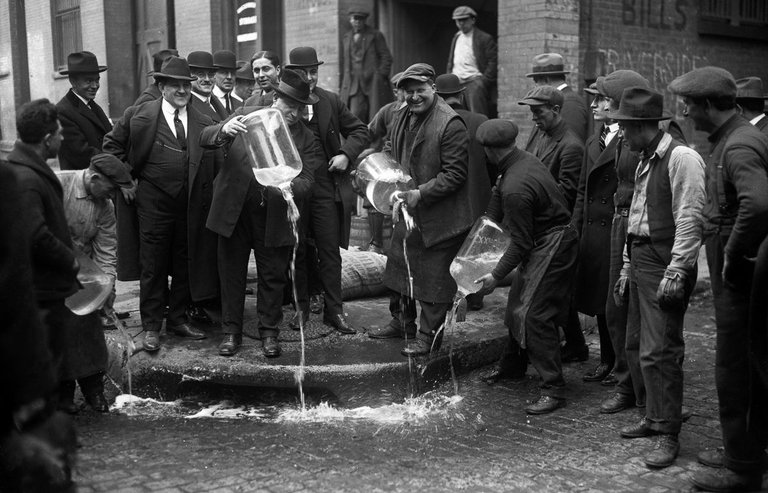
A nationwide ban on the production, importation, transportation, and sale of alcoholic beverages was put in place from 1920 to 1933.
Prohibition was the result of a widespread temperance movement during the first decades of the 20th century, By the turn of the century, temperance societies were a common fixture in communities across the United States. Women played a strong role in the temperance movement, as alcohol was seen as a destructive force in families and marriages.
Both federal and local government struggled to enforce Prohibition over the course of the 1920s. In general, Prohibition was enforced much more strongly in areas where the population was sympathetic to the legislation–mainly rural areas and small towns–and much more loosely in urban areas. Despite very early signs of success, including a decline in arrests for drunkenness and a reported 30 percent drop in alcohol consumption, those who wanted to keep drinking found ever-more inventive ways to do it.
The illegal manufacturing and sale of liquor (known as “bootlegging”) went on throughout the decade, along with the operation of “speakeasies” (stores or nightclubs selling alcohol), the smuggling of alcohol across state lines and the informal production of liquor (“moonshine” or “bathtub gin”) in private homes. In addition, the Prohibition era encouraged the rise of criminal activity associated with bootlegging. The most notorious example was the Chicago gangster Al Capone, who earned a staggering $60 million annually from bootleg operations and speakeasies.
TO LEARN MORE ABOUT HISTORICAL EVENTS FROM 1920 HEAD TO History0x